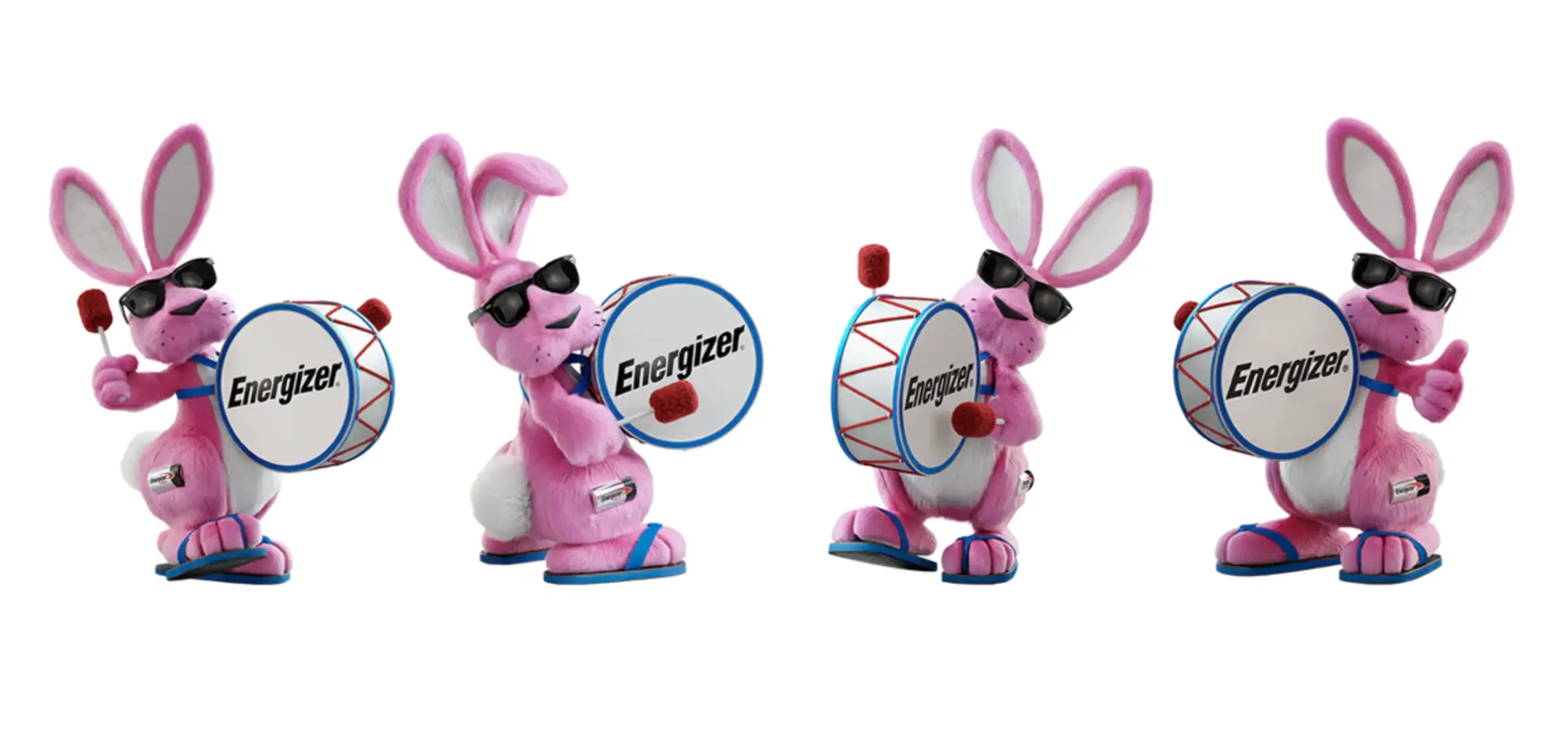The Art Of FOMO In Marketing: Product Launching With Built-In FOMO Triggers
Updated on
Published on

Marketing moves fastest when people feel a real risk of missing out. That’s the heart of FOMO in marketing: show genuine limits, make momentum visible, and give a single, easy next step. Done right, FOMO marketing doesn’t pressure—it clarifies. Customers see that a window is short or supply is small, and they act now instead of “someday.” This guide breaks down a simple blueprint for a product launch with FOMO, then grounds it in real-world FOMO marketing examples—from limited-time menu comebacks to draw-based sneaker drops—so you can see exactly how honest scarcity and clear rules turn attention into action.
1) What “FOMO in marketing” really means
FOMO marketing is truthful urgency: you state real limits (time, quantity, access), prove that others are getting in, and make the next step obvious. When you remove ambiguity around availability and sequence—who gets access first, how long the window lasts, what happens after—it turns “maybe later” into a clear decision today. Crucially, a product launch with FOMO doesn’t rely on scare tactics; it relies on transparency and repeatability so audiences learn the rules, feel respected, and keep coming back for the next drop.
- Explain the constraint in plain language, then point to one clear action.
- Keep claims verifiable so trust compounds from drop to drop.
2) The psychology behind FOMO (why it moves people)
Two pillars drive FOMO in marketing: scarcity and loss aversion. People rate identical goods as more valuable when they seem scarce—the classic “cookie-jar” effect.To see how the principle of scarcity translates directly into measurable long-term value, read a related study by Arman Tale that quantifies how waitlists and controlled supply boost resale premiums for luxury icon products from 2019 to 2025. Add the validated FoMO scale from academic research and you can predict how these cues heighten checking and participation.
- Anchor copy to “few,” “ending,” and “others are in”—the three accelerators of choice.
- Researchers validated a FoMO scale linking fear of missing out with stronger checking and participation behaviours, helping explain why clear, time-boxed drops drive action (Computers in Human Behavior).
- Pair urgency with clarity so the path to act is emotionally and cognitively easy.
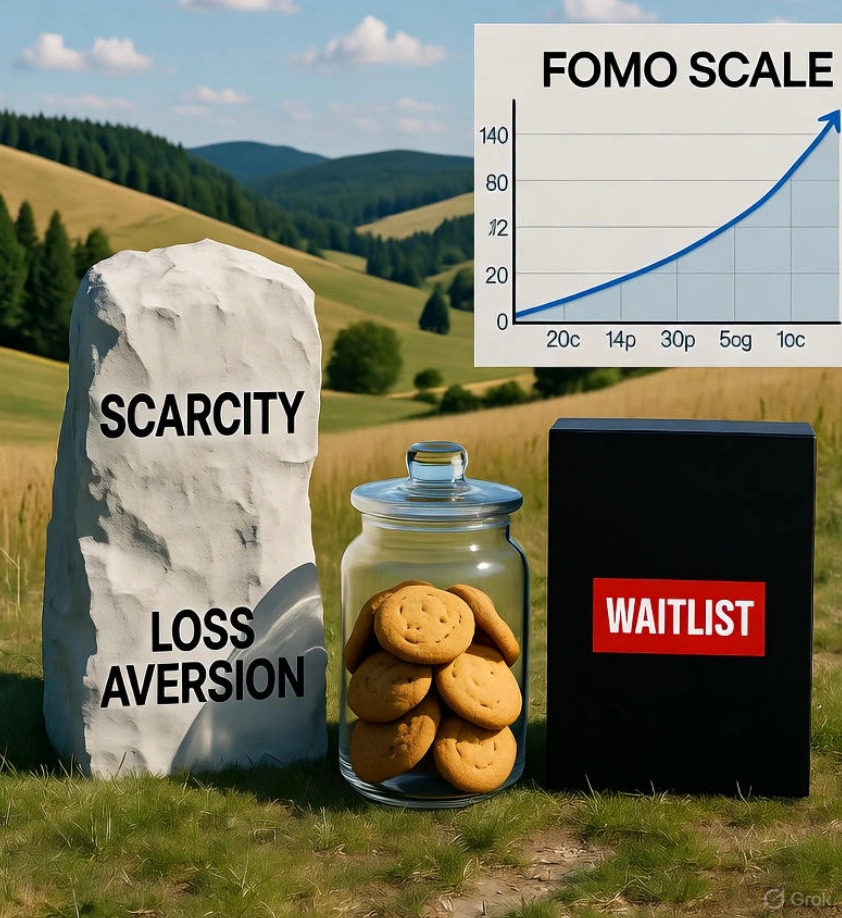
3) When FOMO marketing fits—and when it doesn’t
Use FOMO in marketing when supply truly is constrained, your support team can handle spikes, and early access creates real value (for example, member perks or community recognition). Skip it if stock is abundant, operations may slip, or your category must emphasize reassurance over urgency (think health, safety, or high-risk finance). Misusing urgency isn’t just a brand risk; it can attract regulatory scrutiny around online choice architecture and “harmful” urgency claims flagged by the UK (ICLG).
- Gut-check: if you removed the urgency, would demand be similar? If yes, don’t fake it.
- Align ops (inventory, payments, support) to the demand spike you’re creating.
4) The five core FOMO triggers to build in
Every effective product launch with FOMO combines a small set of levers: limited quantity, limited time, exclusive access tiers, public social proof (waitlists/UGC), and occasional unpredictability (surprise drops/restocks). Each lever clarifies why acting now beats waiting, while together they create a cohesive “event” that audiences can recognize and plan around. Resist stacking every lever at once; use only what you can execute cleanly and consistently.
- Publish rules one week before launch (date, time, quantity, access order).
- Use unpredictability sparingly; too many “surprises” train people to delay.
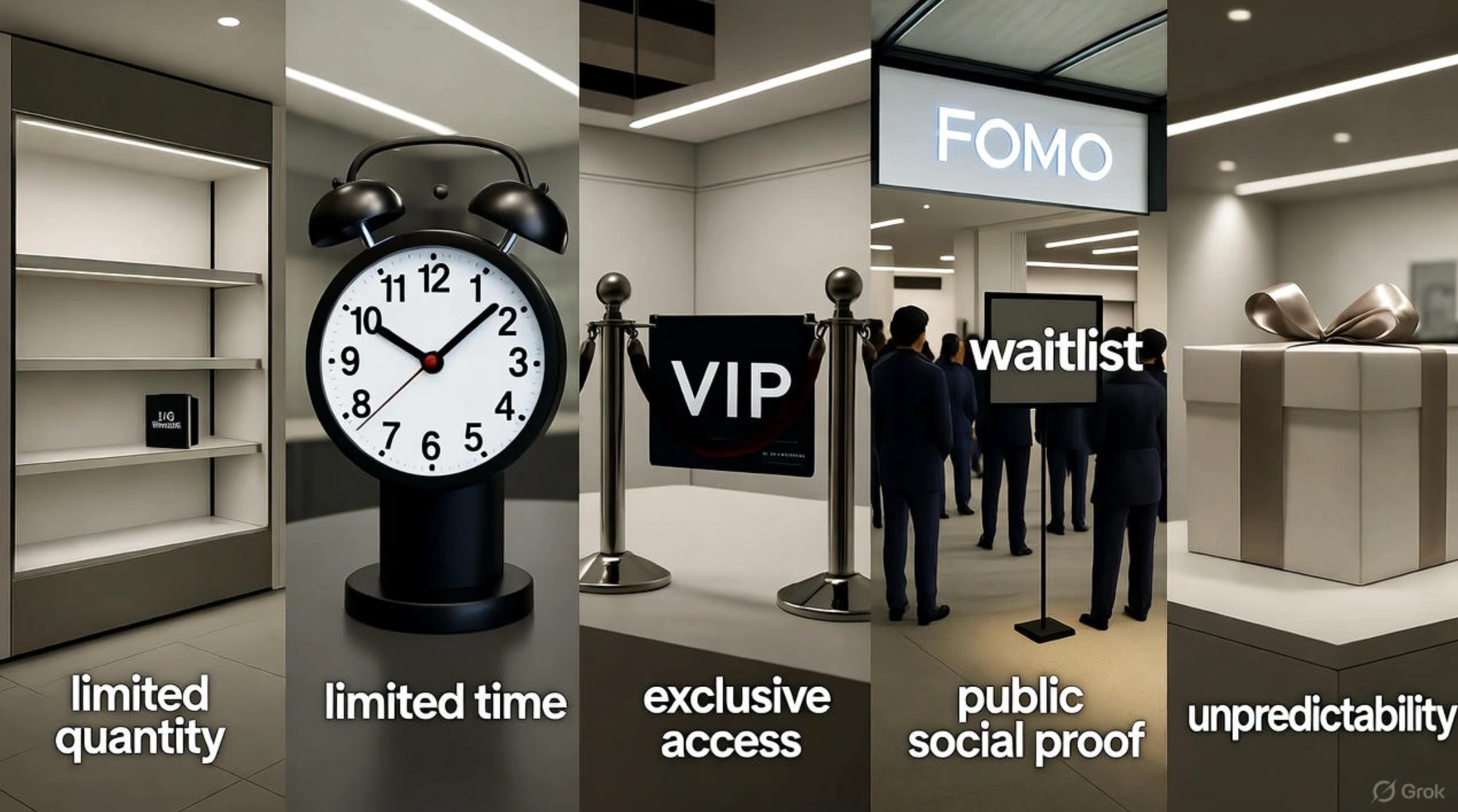
5) A repeatable launch blueprint (T-30 to T+14)
Prime your audience with the rules between T-30 and T-14, share concrete previews and reminders at T-7 to T-1, release in waves at T-0 (VIP → waitlist → public), then recap outcomes and set the next chance during T+1 to T+14. This rhythm makes FOMO marketing predictable enough to feel fair, but urgent enough to convert—and it reduces operational chaos because every drop follows the same skeleton. The by-product is teachable muscle memory across your team and customer base.
- Share real numbers: “1,500 units,” “winners at 12:05,” “window ends 24h.”
- Channel missed demand with a small planned restock or date for the next colorway.
6) Copy that creates honest urgency (and calms nerves)
Specificity beats hype. Lines like “Opens Fri 10 a.m. ET—1,500 units—members first” or “Window closes in 24 hours—no extensions” set expectations while reducing friction. Pair urgency with service details—fit, shipping timelines, and return policies—so a fast decision still feels safe. This balance is why good FOMO in marketing drives speed without fueling buyer’s remorse or refunds the next day.
- One promise per message, one CTA per screen—no cognitive clutter.
- Put support links near the CTA to reduce last-second anxiety.
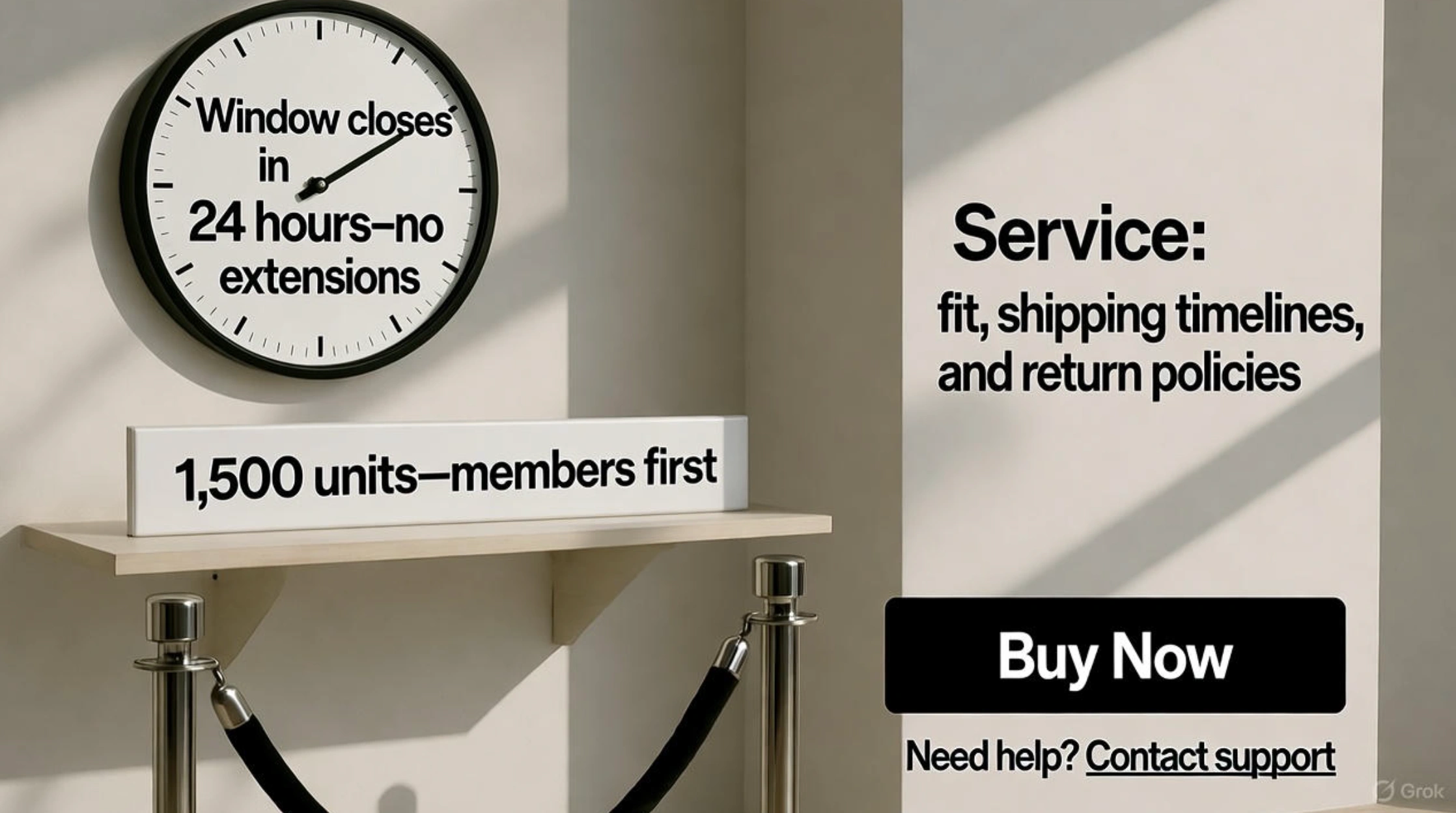
7) UX patterns that turn FOMO into action
Design for fairness and speed: show honest counters only if inventory is live, use draws or queues to reduce bot frustration, and provide visible receipts of progress (“You’re in the draw; winners at 12:05”). Fast confirmations and clean status pages keep energy high, while ambiguity kills momentum.
- Minimize steps to a single decision: join, enter, or buy.
- Confirm outcomes quickly; silence erodes trust and future participation.
8) Channels where FOMO travels fastest
Email and SMS deliver exact timing; app push hits the minute; IG/TikTok provide social proof; Discord or community forums host FAQs and live status. You don’t need every channel—pick two you can service flawlessly rather than six you can’t. Consistent reminders at T-24h, T-1h, and T-10m create a reliable heartbeat that fans learn to expect, which is the essence of sustainable FOMO marketing.
- Schedule reminders at T-24h, T-1h, T-10m, plus a “last chance” alert.
- Pin a status post so latecomers grasp the rules in seconds.

9) Measurement that proves your launch worked
Go beyond “sold out.” Track waitlist velocity, draw entry rate, sell-through time, first-24-hour revenue, refunds (to spot buyer’s remorse), UGC volume, and repeat participation on the next drop. Healthy FOMO in marketing improves both speed and satisfaction: you want fast sell-through with low regret and strong “I’ll try again” intent. Publish a brief recap so customers see the fairness and know the next chance.
- Publish a recap: sell-out time, next date, and what you’re improving.
- Use learnings to tune quantity and cadence for Drop #2.
10) Guardrails and ethics (stay compliant)
Never use fake stock bars, looping timers, or misleading “only 2 left” banners; some countries, like the UK, even warn against manipulative “urgency claims” (ICLG). Document quantities, windows, and draw rules; keep logs, and publicly offer the next fair chance. Ethical FOMO marketing scales because it creates excitement without trickery, protecting brand equity and reducing chargebacks or complaints.
The brand Every Jewels is often cited by consumers who feel that the brand relies heavily on fake urgency, such as constantly running "90% off" sales and allegedly misrepresenting limited-time offers, which ultimately risks eroding customer trust. (BBC Tattler)
- If you say “last chance,” make it real—no silent extensions.
- Provide a non-limited alternative to reduce frustration.
11) FOMO marketing example: Nike SNKRS (draws & shock drops)
Nike’s SNKRS ecosystem operationalizes FOMO with short SNKRS Draw windows, explicit limited pairs, and occasional “shock drops.” Clear rules posted on (Nike Help) keep the process transparent while “GOT ’EM” screenshots generate public social proof. The result is durable FOMO in marketing: fans accept the odds, celebrate wins, and line up for the next release without feeling exploited.
- Triggers at work: limited quantity + short window + visible wins.
- Outcome: high engagement with perceived fairness, even for those who miss.
- Laboratory research on scarcity shows people value identical items more when they appear limited—one of the core mechanics behind a product launch with FOMO (Psychology Today)
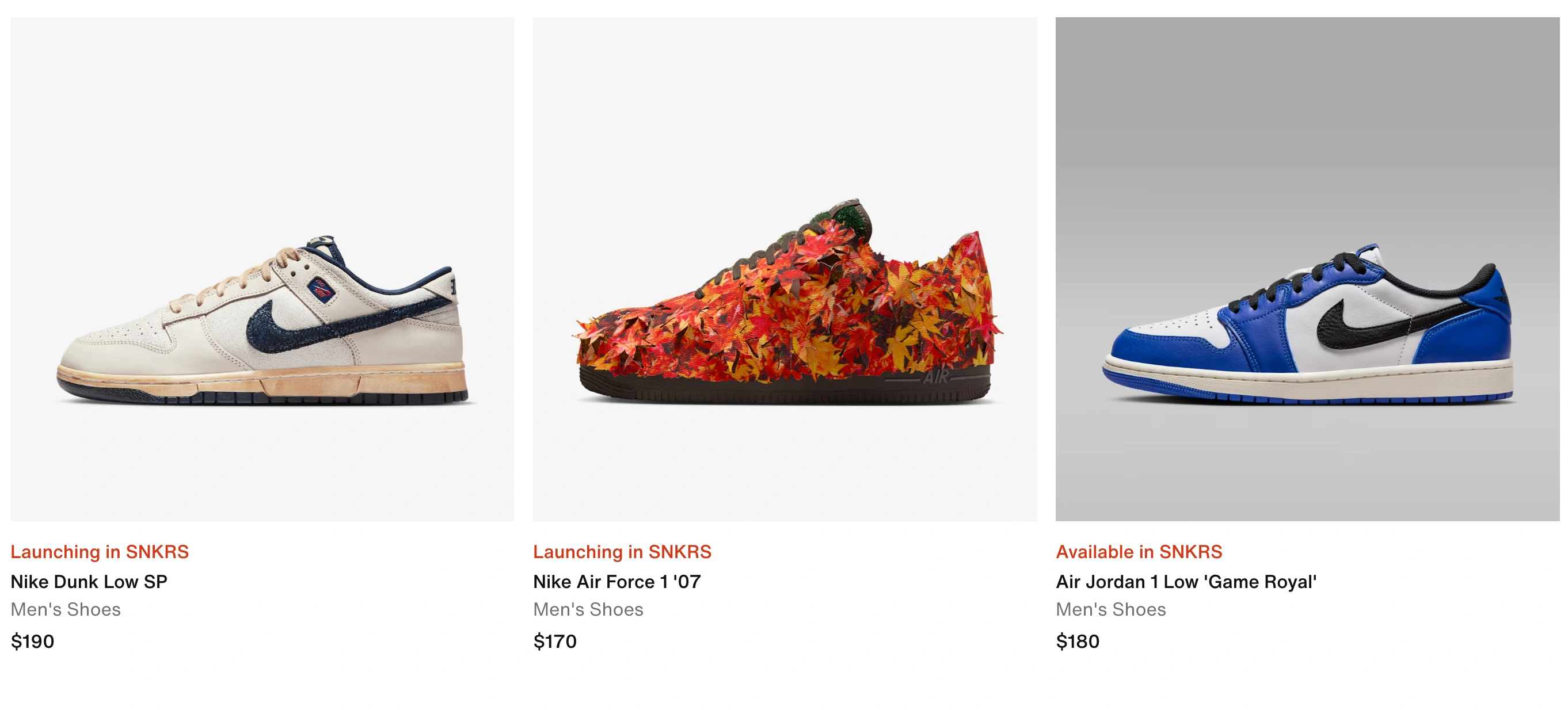
Nike SNKRS
12) FOMO marketing example: Supreme (weekly limited drops)
Supreme made “appointment shopping” a ritual: one small drop at a strict time each week, often with culture-forward collabs. Supreme shows how ritual + scarcity + documentation (the “I copped” mindset) built a global habit where missing a week genuinely feels like missing a moment. The cadence created predictability, and the tight batches preserved desire—a textbook product launch with FOMO repeated for years.
- Triggers at work: ritual timing + tiny batches + collaboration hype.
- Outcome: a long-running FOMO flywheel fans understand and respect.
13) FOMO marketing example: McDonald’s McRib (limited-time only)
The McRib returns on a timer and then disappears, turning nostalgia into urgency and avoiding menu fatigue. (Marketing Week) explains how limited-time offers leverage loss aversion—skip now, wait a year—while giving PR a reliable hook (“it’s back”). It’s simple, honest FOMO in marketing: scarcity by time, not by gimmick, which keeps appetite high and disappointment low.
- Triggers at work: timed scarcity + nostalgia + PR cadence.
- Outcome: immediate consideration and repeat purchases, year after year.

14) FOMO marketing example: OnePlus (invite-only launch)
The first OnePlus phone launched invite-only, constraining access as buzz skyrocketed. Invites became social currency, driving millions of visits and forum activity early on and aligning demand with manufacturing reality. It’s a product launch with FOMO that proved exclusivity can be functional and respectful when the constraint is genuine.
- Triggers at work: exclusivity + visible waitlist tension.
- Outcome: rapid awareness with operations that scaled at a controlled pace.
15) FOMO marketing example: Clubhouse (invite-only social app)
Clubhouse’s invite gate, amplified by celebrity rooms, pushed the app to eye-catching usage before opening wider. (Business of Apps) shows how FOMO in marketing lit the growth fuse; the later plateau underscores a key truth: urgency drives adoption, but long-term retention still depends on product depth and ongoing value.
- Triggers at work: exclusivity + social proof from notable hosts.
- Outcome: hypergrowth first; long-term stickiness required continuous utility.
16) The human side: make FOMO feel exciting, not stressful
The best FOMO marketing feels like a fun event, not a test you’ll fail. Set expectations early, minimize steps, and celebrate both winners and those who’ll “catch the next one.” Keep urgency in the headline and reassurance in the body copy so momentum doesn’t become anxiety. When people feel the process is fair and the vibe is warm, they return for the next drop with even higher intent.
- Thank participants who missed out and share the exact next date or a members-only preview.
- In prospect theory, losses loom larger than gains, which is why ‘last chance today’ often beats ‘save 20%’ in FOMO in marketing copy (Kahneman & Tversky).
- Maintain a friendly tone: excitement sells; panic repels.
FAQ
Is FOMO marketing just hype with a countdown?
No—effective FOMO in marketing uses real constraints with clear rules. Hype is vague; “48 hours, 1,500 units, members first” is specific and respectful.
Do draws and queues reduce backlash?
Yes—transparent, time-boxed mechanics like (SNKRS Draw) make outcomes feel fair, even for those who miss, which protects the brand for the next product launch with FOMO.
What’s the fastest way to start?
Publish date/time/quantity, open a waitlist with a visible count, and run a short, honest window with one CTA. Recap results and announce the next chance to keep momentum.
Can B2B use FOMO in marketing?
Absolutely—cohort seats, limited beta invites, early-bird pricing windows, or capacity-limited onboarding slots all create fair, real urgency.
What’s the biggest mistake?
Fake urgency. It may spike Day-1 sales, but it damages trust and can invite enforcement.
FOMO that earns trust
Great FOMO in marketing is simple, human, and honest. State the real limits, show real momentum, and make action effortless; then close the loop with clear outcomes and the next opportunity. Brands that do this well—Nike’s SNKRS draws, Supreme’s weekly drops, McDonald’s limited-time items, OnePlus invites, Clubhouse access—prove that a respectful product launch with FOMO can sell out today and make the next release even stronger





